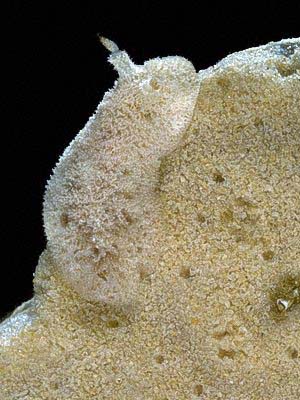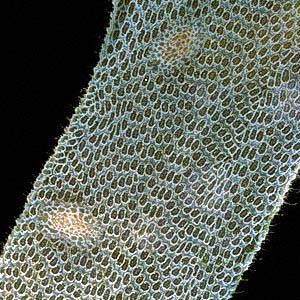

Camouflage
PHOTO
Upper: Atagema osseosa. On its sponge food. Note its bristeled surface and pores to match the sponge surface. Coffs Harbour Region, northern New South Wales, Australia, December 1990. Lower: Corambe sp. On bryozoan colony Membranipora sp. growing on laminarian brown algae. Note the white pattern on the 2 slugs to match the bryozoan colony pattern. Green Point, Woolgoolga, northern New South Wales, November 1982. PHOTOs: Bill Rudman.
Most sea slugs have lost the shell that protects the snails from being an easy meal for passing predators. Slugs have had to develop other ways of protection.
The first line of defence has been to try and become invisible and blend in with their surroundings. we call this camouflage. Anyone who has attempted to collect nudibranchs knows how hard it is to find many species. There are many spectacular examples of camouflage. In some cases both the texture and the colour of the body match the colour and the texture of the food they eat. Examples include the nudibranchs:
Atagema osseosa (Dorididae)
Rostanga arbutus (Dorididae)
Jorunna sp. (Dorididae)
Corambe sp. 1 (Corambidae)
Favorinus japonicus (Glaucidae)
Cuthona kuiteri (Tergipedidae)
Marionia sp (Tritoniidae)
And amongst the sacoglossans :
Placida cf. dendritica (Limapontiidae)
Stiliger smaragdinus .(Limapontiidae).
See also: Colour in sea slugs.
Authorship detailsRudman, W.B., 2004 (July 22) Camouflage. [In] Sea Slug Forum. Australian Museum, Sydney. Available from http://www.seaslugforum.net/factsheet/camouflage
